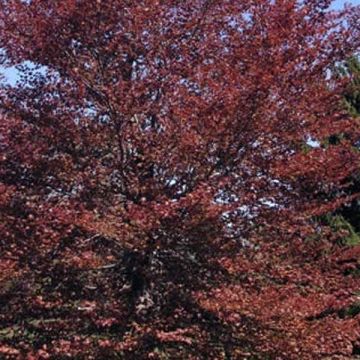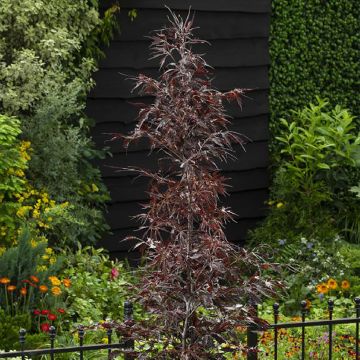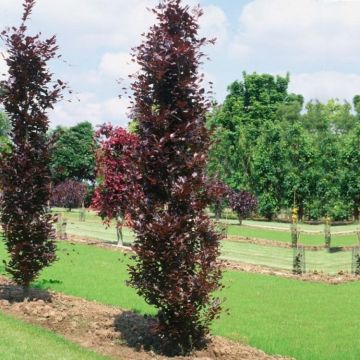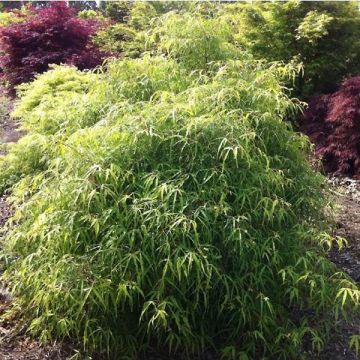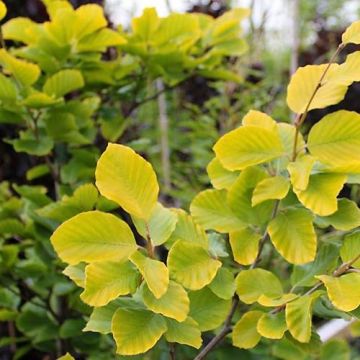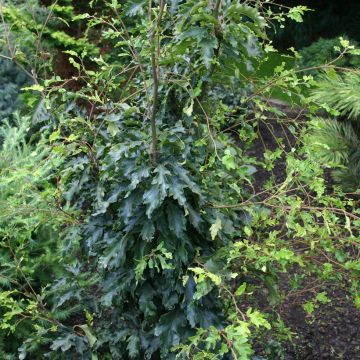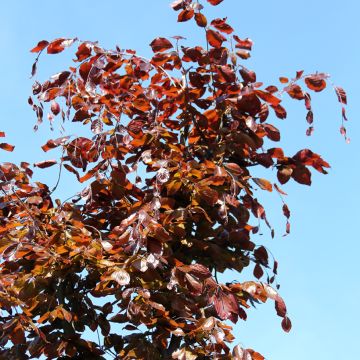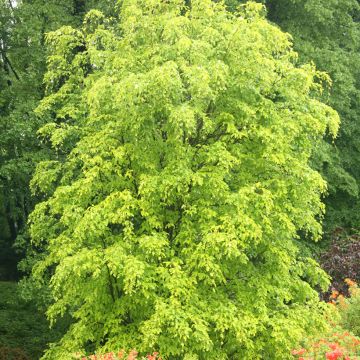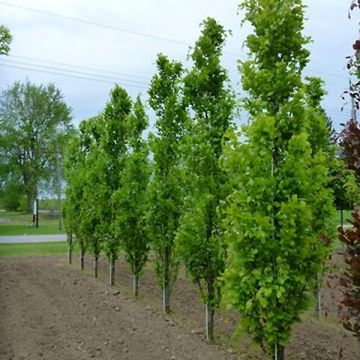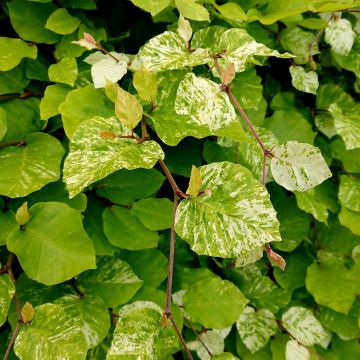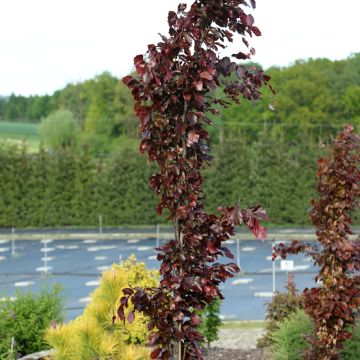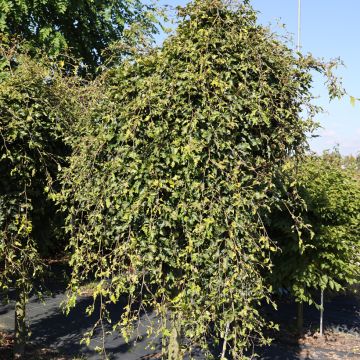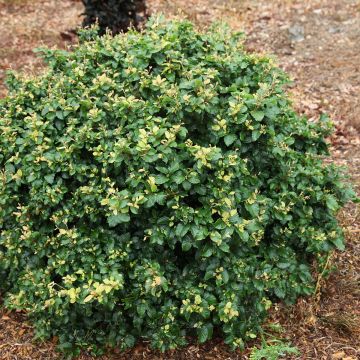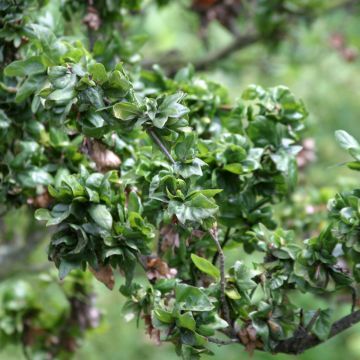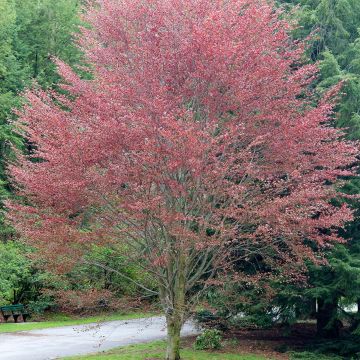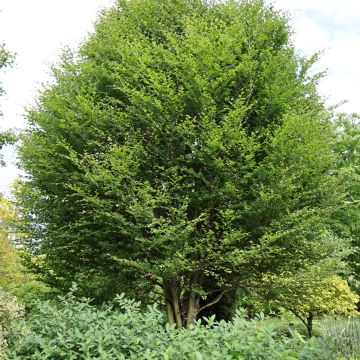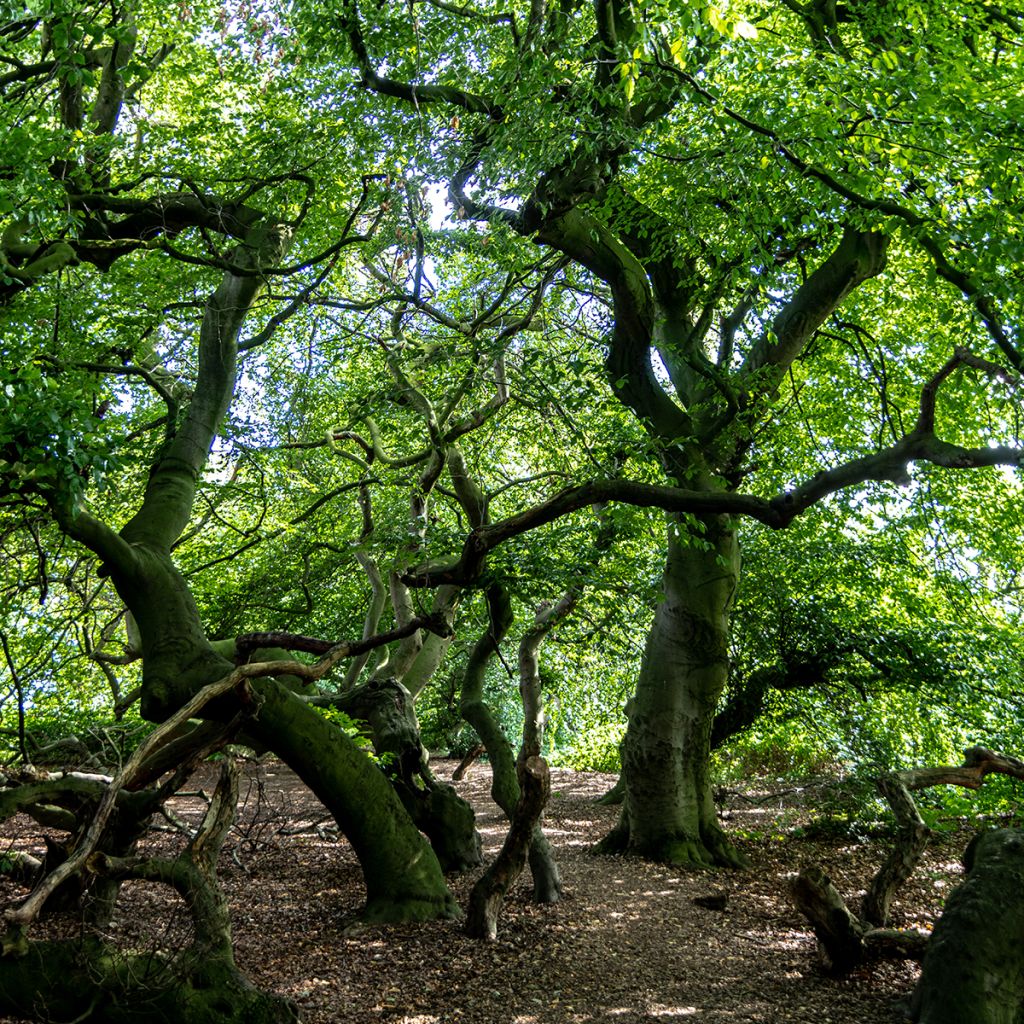

Fagus sylvatica Suentelensis
Fagus sylvatica Suentelensis
Fagus sylvatica f. suentelensis
Beech
Why not try an alternative variety in stock?
View all →This plant carries a 24 months recovery warranty
More information
We guarantee the quality of our plants for a full growing cycle, and will replace at our expense any plant that fails to recover under normal climatic and planting conditions.
From €5.90 for pickup delivery and €6.90 for home delivery
Express home delivery from €8.90.
Delivery to Corse prohibited: UE law prohibits the import of this plant from mainland France to Corse as part of the fight against Xylella fastidiosa. Please accept our sincere apologies.
More information
Does this plant fit my garden?
Set up your Plantfit profile →
Description
Fagus sylvatica Suentelensis is a beautiful form of twisted beech that can be admired in the Süntel region of Germany. This tree has a remarkable silhouette throughout the seasons due to its wide and curiously twisted framework. Its leafy crown is very dense, forming a curious green parasol in the summer. Like all beech trees, its foliage turns a beautiful orange-yellow in autumn and remains on the branches until the end of winter. A fascinating tree that seems to come straight out of Germanic legends, it should be placed as a solitary tree in a park or large garden.
Fagus sylvatica Suentelensis is part of a group of beech trees under the term Fagus sylvatica group Tortuosa. The suentelensis form represents a German population of twisted beech trees located near the town of Süntel. It is characterised by branches that are both twisted and partially fused. It is a deciduous tree with slow to very slow growth, capable of living between 300 and 500 years. Eventually, it can reach a height of 8 to 9 m with a spread of 8 to 11 m and can live for a very long time. Its cylindrical, massive, short, twisted trunk is covered with smooth light grey bark. Its crown is wide, quite irregular, supported by twisted and bent main branches. These branches themselves branch out into secondary branches that sometimes twist to the ground and are capable of rooting. Its foliage is particularly dense, composed of oval leaves arranged alternately on the branches measuring 4 to 10 cm long, and shiny green. They take on a decorative orange-yellow in autumn. These leaves are marcescent, meaning they dry up while remaining on the tree and only fall to the ground in late winter, just before the arrival of new leaves.
The flowers of the twisted beech appear at the same time as the leaves, from April to May. The male flowers are yellow and arranged in pendulous catkins measuring 40 to 60 mm. The female flowers are green and grouped in 2 to 4 at the end of the branches. Fagus sylvatica Suentelensis produces brown, glossy beech nuts covered in bristly prickles. These fruits, measuring 12 to 18 mm long, are edible in small quantities. Mountain dwellers used to use them to make flour.
A magnificent specimen to be planted in a large garden, the twisted beech is not suitable for small spaces. It thrives particularly well in moist, well-drained, humus-rich soils. However, it can be trained as a topiary to reduce its size or grown as a bonsai. There are other twisted trees and shrubs of all sizes that will delight collectors.
The cause of the peculiar growth habit of twisted beech trees is still unexplained.
Report an error about the product description
Plant habit
Flowering
Foliage
Botanical data
Fagus
sylvatica f. suentelensis
Fagaceae
Beech
Western Europe
Other Fagus - Beech
Planting and care
The twisted beech thrives in partial shade and non-scorching sunlight. It enjoys cool and temperate climates, as well as mountainous regions. The soil should be moist and well-drained, with a constant level of humidity, as it does not tolerate drought. Plant it with its root ball intact to give it the best chance of a long life. In February and March, when the tree is dormant, remove any branches that compromise its symmetry or become entangled to maintain a good shape. Be mindful of aphids, scale insects, and mildew.
Planting period
Intended location
Care
This item has not been reviewed yet - be the first to leave a review about it.
Haven't found what you were looking for?
Hardiness is the lowest winter temperature a plant can endure without suffering serious damage or even dying. However, hardiness is affected by location (a sheltered area, such as a patio), protection (winter cover) and soil type (hardiness is improved by well-drained soil).

Photo Sharing Terms & Conditions
In order to encourage gardeners to interact and share their experiences, Promesse de fleurs offers various media enabling content to be uploaded onto its Site - in particular via the ‘Photo sharing’ module.
The User agrees to refrain from:
- Posting any content that is illegal, prejudicial, insulting, racist, inciteful to hatred, revisionist, contrary to public decency, that infringes on privacy or on the privacy rights of third parties, in particular the publicity rights of persons and goods, intellectual property rights, or the right to privacy.
- Submitting content on behalf of a third party;
- Impersonate the identity of a third party and/or publish any personal information about a third party;
In general, the User undertakes to refrain from any unethical behaviour.
All Content (in particular text, comments, files, images, photos, videos, creative works, etc.), which may be subject to property or intellectual property rights, image or other private rights, shall remain the property of the User, subject to the limited rights granted by the terms of the licence granted by Promesse de fleurs as stated below. Users are at liberty to publish or not to publish such Content on the Site, notably via the ‘Photo Sharing’ facility, and accept that this Content shall be made public and freely accessible, notably on the Internet.
Users further acknowledge, undertake to have ,and guarantee that they hold all necessary rights and permissions to publish such material on the Site, in particular with regard to the legislation in force pertaining to any privacy, property, intellectual property, image, or contractual rights, or rights of any other nature. By publishing such Content on the Site, Users acknowledge accepting full liability as publishers of the Content within the meaning of the law, and grant Promesse de fleurs, free of charge, an inclusive, worldwide licence for the said Content for the entire duration of its publication, including all reproduction, representation, up/downloading, displaying, performing, transmission, and storage rights.
Users also grant permission for their name to be linked to the Content and accept that this link may not always be made available.
By engaging in posting material, Users consent to their Content becoming automatically accessible on the Internet, in particular on other sites and/or blogs and/or web pages of the Promesse de fleurs site, including in particular social pages and the Promesse de fleurs catalogue.
Users may secure the removal of entrusted content free of charge by issuing a simple request via our contact form.
The flowering period indicated on our website applies to countries and regions located in USDA zone 8 (France, the United Kingdom, Ireland, the Netherlands, etc.)
It will vary according to where you live:
- In zones 9 to 10 (Italy, Spain, Greece, etc.), flowering will occur about 2 to 4 weeks earlier.
- In zones 6 to 7 (Germany, Poland, Slovenia, and lower mountainous regions), flowering will be delayed by 2 to 3 weeks.
- In zone 5 (Central Europe, Scandinavia), blooming will be delayed by 3 to 5 weeks.
In temperate climates, pruning of spring-flowering shrubs (forsythia, spireas, etc.) should be done just after flowering.
Pruning of summer-flowering shrubs (Indian Lilac, Perovskia, etc.) can be done in winter or spring.
In cold regions as well as with frost-sensitive plants, avoid pruning too early when severe frosts may still occur.
The planting period indicated on our website applies to countries and regions located in USDA zone 8 (France, United Kingdom, Ireland, Netherlands).
It will vary according to where you live:
- In Mediterranean zones (Marseille, Madrid, Milan, etc.), autumn and winter are the best planting periods.
- In continental zones (Strasbourg, Munich, Vienna, etc.), delay planting by 2 to 3 weeks in spring and bring it forward by 2 to 4 weeks in autumn.
- In mountainous regions (the Alps, Pyrenees, Carpathians, etc.), it is best to plant in late spring (May-June) or late summer (August-September).
The harvesting period indicated on our website applies to countries and regions in USDA zone 8 (France, England, Ireland, the Netherlands).
In colder areas (Scandinavia, Poland, Austria...) fruit and vegetable harvests are likely to be delayed by 3-4 weeks.
In warmer areas (Italy, Spain, Greece, etc.), harvesting will probably take place earlier, depending on weather conditions.
The sowing periods indicated on our website apply to countries and regions within USDA Zone 8 (France, UK, Ireland, Netherlands).
In colder areas (Scandinavia, Poland, Austria...), delay any outdoor sowing by 3-4 weeks, or sow under glass.
In warmer climes (Italy, Spain, Greece, etc.), bring outdoor sowing forward by a few weeks.

































